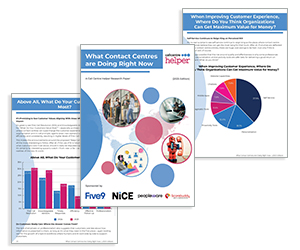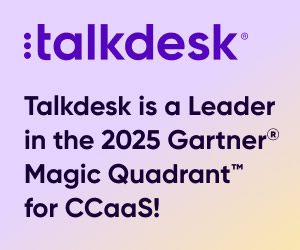Staffing your call centre the right way can transform customer service from a cost centre into a competitive advantage.
But in a time when customer expectations are sky-high, technology is constantly evolving, and businesses need to scale fast, getting staffing right takes more than just hiring a few agents and setting up phone lines.
7 Steps to Building a Call Centre Staffing Strategy
In this guide, we’ll explore how to build a flexible, modern staffing strategy that fits your business.
1. Start With the Right Support Strategy
Before you think about headcounts or hiring timelines, take a step back and ask: What role does customer support play in your business?
For some companies, support is a key part of the brand, a space to create loyalty, build trust, and deliver standout service. For others, it’s about efficiency, resolving issues quickly, and reducing friction.
Understanding this sets the tone for everything that follows. If your goal is high-touch, brand-aligned support, your staffing model will look very different than a business focused on volume and speed. Your strategy shapes your structure, not the other way around.
2. Choose Between In-House and Outsourced Teams
One of the biggest decisions in call centre staffing is whether to build your own internal team or partner with an external provider. There’s no universal answer, each route has its strengths and limitations.
In-House Support
In-house support gives you full control over training, quality, and culture. You can shape the tone of voice, deeply integrate your support with product and operations, and develop internal expertise. This is especially valuable if support is closely tied to your customer experience.
Outsourcing
Outsourcing can unlock serious advantages in speed, scale, and cost. By tapping into trained teams and pre-built infrastructure, you can ramp up quickly, manage fluctuations in demand, and focus your internal efforts elsewhere. It’s a practical choice for companies experiencing rapid growth or seasonal spikes.
Many businesses today opt for a hybrid approach, keeping a core internal team while outsourcing specific functions, time zones, or languages to trusted partners.
For more on setting up an outsourced call centre, read our article: How to Set up an Outsourced Contact Centre Business
3. Find the Best Ownership Model for Your Call Centre
You don’t have to go all-in on one model. Ownership structures are far more flexible than they used to be. Some companies prefer to fully own and operate their support function. This typically involves greater cost and responsibility, but offers complete control.
Others choose a co-managed model, where internal leadership sets the vision and strategy, while a partner runs the daily operations. This approach offers agility without giving up too much oversight.
There’s also the fully outsourced path, which is ideal for businesses that want support handled end-to-end, especially if it’s not considered a core business function.
The key is finding a model that aligns with your growth plans and resource levels, and allows for changes as you scale.
4. Pick the Right Location for Your Team
Choosing where your support team is based affects everything from costs and time zones to cultural understanding and language capabilities.
Some companies prefer to keep support onshore, especially for high-touch or regulated industries. This often provides better customer alignment and easier team management.
Others look nearshore, choosing neighbouring countries with similar time zones and strong English fluency, a cost-effective middle ground.
And many explore offshore teams to reduce costs and expand support hours, particularly for handling high volumes of simpler enquiries.
Increasingly, businesses are building distributed teams that combine all three. With cloud-based systems and remote work becoming the norm, your support team can be global, as long as it’s connected, well trained, and aligned.
If you are planning on managing a fully remote call centre team, read our article: The Secrets to Coaching Remotely
5. Balance Agents and Automation Without Compromising Quality
Call centres aren’t just about people any more, but they’re not just about automation either. The smartest models strike a balance.
Live agents remain crucial for complex issues, emotional situations, or moments that require empathy. These are the interactions that build customer loyalty and trust.
But not every issue needs a human. Automating basic tasks through chatbots, IVR, and knowledge bases can drastically reduce wait times and free up your team for more meaningful work.
Think of automation as your frontline filter, handling the repetitive stuff, while routing more valuable conversations to your agents. The goal isn’t to replace humans, but to amplify them.
6. Build a Tech Stack That Supports Real People
Your staffing model is only as strong as the systems behind it. When technology is clunky or disconnected, even the best teams struggle.
The right platforms help you forecast call volumes, schedule shifts efficiently, and monitor performance in real time. Tools like workforce management software, omnichannel support platforms, and CRM systems ensure that your agents have what they need to succeed, from customer history to response templates.
But more than that, your tech should feel intuitive. If it’s making your agents’ jobs harder, it’s time for a rethink.
If you want help looking for the right tech stack for your contact centre, read our article: The Secret to a Successful Tech Upgrade
7. Put Your Staffing Model Into Action
It’s not enough to plan your staffing model, you have to apply it, test it, and evolve it over time.
Start with forecasting. Use your historical data to predict demand patterns and schedule coverage accordingly.
Then track your key metrics, things like response time, agent occupancy, and customer satisfaction. If you’re falling short, revisit your assumptions, adjust staffing levels, and refine your processes.
Always stay flexible. Your team size, tools, and training will need to shift as your business and customer needs evolve. A rigid model is a fragile one. Build adaptability into your foundation.
This article is a revised version of The Complete Guide on Call Centre Staffing, originally published by Scorebuddy.
For more on staffing your contact centre, read our articles:
- How to Calculate Staffing in a Contact Centre
- The Dos and Don’ts of Agent Scheduling
- How Can Technology Prevent Understaffing?
Author: Hannah Swankie
Reviewed by: Jo Robinson
Published On: 3rd Sep 2025 - Last modified: 17th Nov 2025
Read more about - Expert Insights, Business Process Outsourcing (BPO), Scheduling, Scorebuddy, Staffing






































